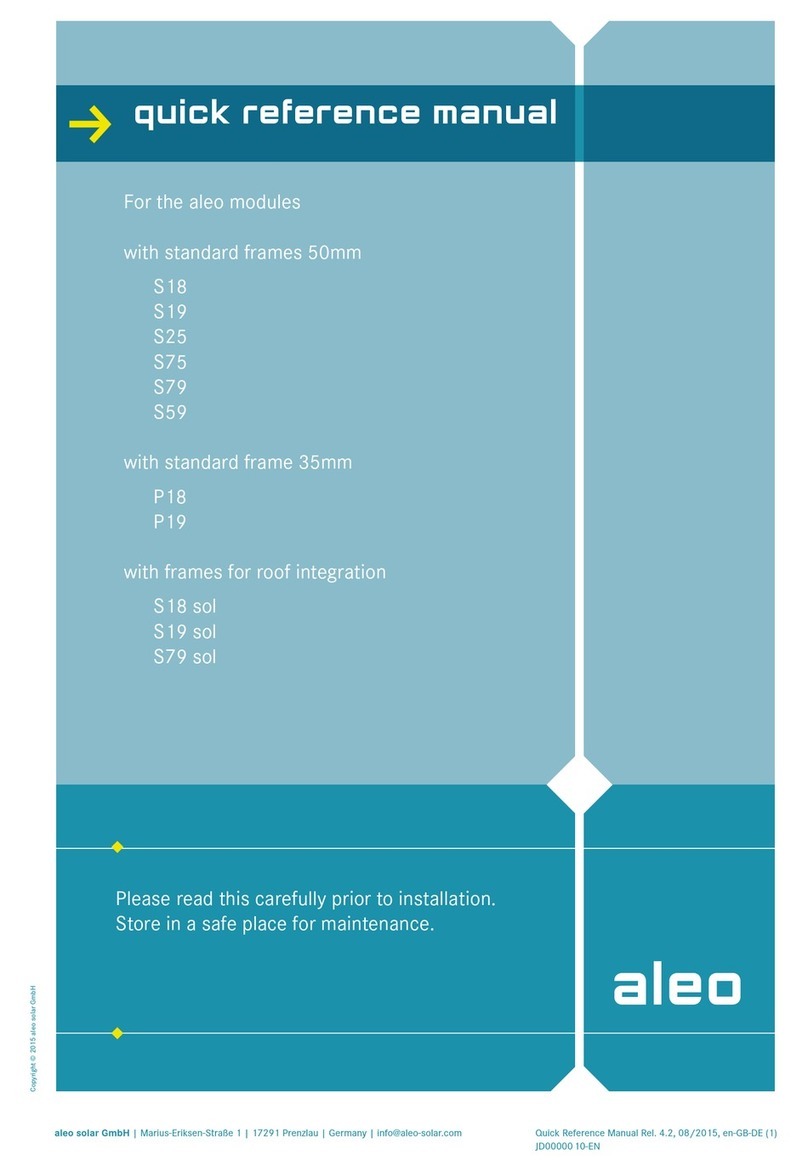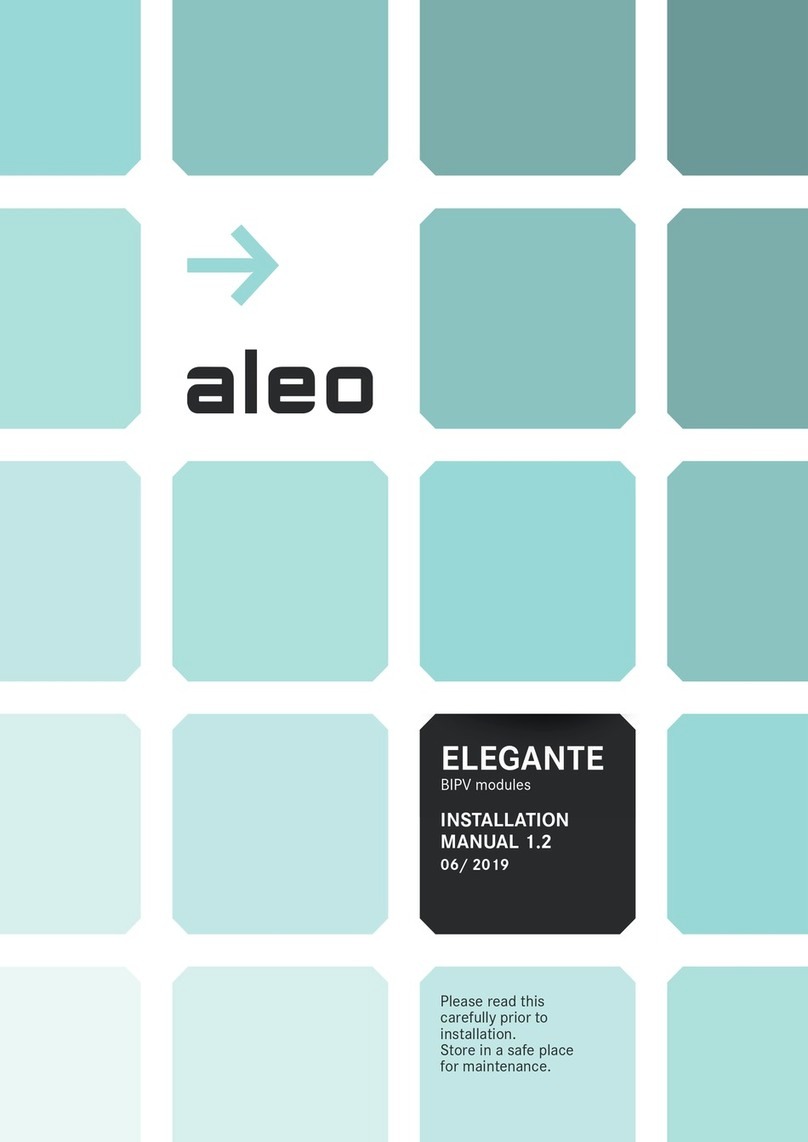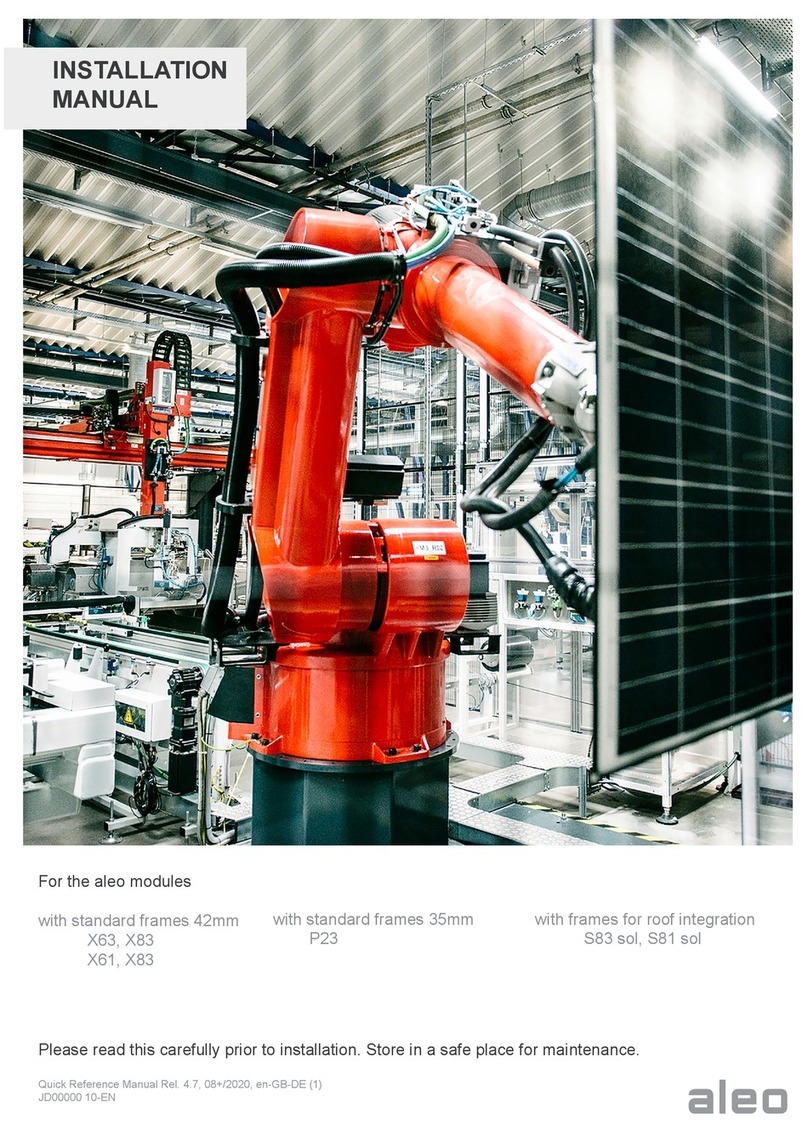
aleo
aleo solar Deutschland GmbH | Osterstraße 15| 26122 Oldenburg | Germany | servi[email protected] installation instructions Edition 01/2012 en-GB-Intl (120508b) Page 3/60
Contents
1.Safety Information .................................................... 4
1.1.Warnings......................................................................4
1.2.Notices ........................................................................4
1.3.Other system components...........................................4
2.About this Manual..................................................... 5
2.1.Audience......................................................................5
2.2.Chapters for planners ..................................................5
2.3.Chapters for installers..................................................5
2.4.Chapters for operators.................................................5
2.5.Key...............................................................................5
2.6.Safekeeping of this document .....................................5
3.Introduction............................................................... 6
3.1.Normal use ..................................................................6
3.2.Product support...........................................................7
4.Handling of aleo Modules......................................... 8
4.1.Mechanical precautionary measures ...........................8
4.2.Electrical precautionary measures...............................9
5.Planning ...................................................................10
5.1.Selecting a location ...................................................10
5.2.Alignment (azimuth)...................................................10
5.3.Inclination (elevation)................................................. 11
5.4.Avoidance of shadowing ............................................ 11
5.5.Visual precautionary measures..................................12
5.6.Selection of aleo modules..........................................12
5.7.General installation options .......................................13
5.8.Visually appealing installation....................................14
5.9.Defined Installation Options.......................................15
5.10.Anti-theft protection ..................................................18
5.11.Matching of solar modules and inverters...................19
5.12.Electrical installation..................................................19
5.13.Precautionary measures ............................................23
6.Preparing for Installation .......................................25
6.1.Storing, transporting and unpacking modules ...........25
6.2.Precautionary measures ............................................25
7.Mechanical Installation ..........................................28
7.1. Visually attractive roof installation.............................28
7.2 .Types of installation ...................................................28
7.3 .Support area..............................................................28
7.4 .Spacing and clearances.............................................28
8.Electrical Installation..............................................30
8.1.Order of work steps ...................................................30
8.2.Series connection......................................................30
8.3.Wiring ........................................................................30
8.4.Parallel switching, special requirements.................... 31
8.5.String diodes.............................................................. 31
8.6.Installation of direct current string fuses ................... 31
8.7.Inverter connection.................................................... 31
8.8.Protective potential equalisation (earthing)................32
8.9.Lightning protection...................................................33
9.Mechanical Mounting Details ................................ 34
9.1.Position of mounting rails..........................................34
9.2.Configuration of the clamps for clamp mounting.......34
9.3.Mounting with clamps ...............................................34
9.4.Mounting with bolts...................................................35
9.5.Lay-in mounting.........................................................36
9.6.Load levels.................................................................36
9.7.Diagram key...............................................................36
9.8.Diagrams ...................................................................38
10.Maintenance............................................................ 44
10.1.Inspection..................................................................44
10.2.Check-up ...................................................................44
10.3.Inspections................................................................44
10.4.Cleaning ....................................................................45
10.5.Repairs ......................................................................46
10.6.Potential Induced Degradation (PID)..........................46
11.Decommissioning ................................................... 47
11.1.Disposal..................................................................... 47
11.2 .Taking Back Scheme.................................................. 47
11.3 .PV Cycle .................................................................... 47
A.Parameters of aleo Modules.................................. 48
B.Creation and Avoidance of Shadowing................. 49
B.1Deepest shadow and half shadow .............................49
B.2Shadows from cylindrical objects..............................49
B.3Shadows from edges .................................................50
C.Optimisation of Wiring for Lightning Protection. 52
C.1.Keep loops small .......................................................52
C.2.Current direction in loops..........................................53
C.3.Laying the return circuit.............................................53
D.Explanations............................................................ 55
D.1.Abbreviations.............................................................55
D.2.Glossary ....................................................................56
E.Index......................................................................... 57
F.Bibliography ............................................................ 59































